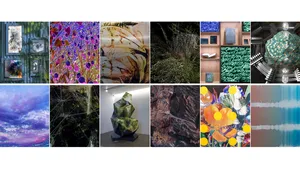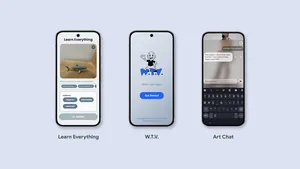Surfacing women in science with the Smithsonian
Women have always been on the forefront of science. From Ada Lovelace designing the first computer programs, to Rosalind Franklin decoding the structure of DNA, to Katherine Johnson figuring out the physics for mankind to reach the moon, the history of science has been driven by the contributions of women. However, they have often not received proper credit or acknowledgement for their essential work.
This is why today we are thrilled to announce a new phase in our long-term collaboration between the Smithsonian and Google Arts & Culture. Together, we’ve developed new machine learning tools for use by curators at the Smithsonian American Women’s History Initiative as we dive into the institution’s archives to help uncover and highlight the many roles women have played in science over more than 174 years of history.
Through this first of its kind collaboration with Google Arts & Culture, our lead partner on the Smithsonian Open Access initiative, it is now easier than ever to surface the work of women in Smithsonian history. This project builds on Google Arts & Culture’s previous work, which made over 2.8 million 2D and 3D images from the museum collections available to the public for the very first time in 2020.
Powered by machine-learning, these new tools enable three types of research in the Smithsonian’s archives: comparing records across history by connecting different “nodes” in the metadata, identifying the names of women even when they haven’t been explicit (such as by the use of a husband’s name instead), and analyzing image records to cluster and group together similarities to facilitate comparison.
Results are already promising. Through analyzing collections relating to Mary Jane Rathbun, likely the first woman curator at the Smithsonian, for example, we have been able to find taxonomy cards in Smithsonian records that detail a collecting trip she took with Serena Katherine “Violet” Dandridge, a scientific illustrator who worked alongside Rathbun in the Department of Marine Invertebrates in 1911, and gain a better understanding of early collaborations between women. In fact, the taxonomy cards reveal that a third colleague, Dr. Harriet Richardson Searle, identified some of the specimens that Rathbun and Dandridge brought back to the Smithsonian. Though this experiment is only just beginning, it is clear that technology can play a key role in facilitating further research and help to recover stories of women in science.
This multi-dimensional cluster of images in museum data represents one of the machine learning tools to create new ways of parsing through more than 16.9 million digital records in the archives and collections developed by Google Arts & Culture in collaboration with the Smithsonian.
This taxonomy card, one of the early finds of the collaboration, details a specimen collected on a 1911 research expedition to Maine undertaken by Mary Jane Rathbun, Serena Katherine “Violet” Dandridge, and Dr. Harriet Richardson Searle, and provides valuable insight into the collaborative work of women scientists in the early 20th century.
Mary Jane Rathbun (1860 - 1943) was likely the first woman curator at the Smithsonian. According to colleagues, in 1914, Rathbun resigned her paid position so that her salary could go towards hiring an assistant to aid in her work. She continued to work unpaid for the remainder of her career.
Serena Katherine “Violet” Dandridge (1878 - 1956) worked as a scientific illustrator at the Smithsonian circa 1903 - 1915. Dandridge supported the suffrage movement and developed her interest in art and nature throughout her life.
Dr. Harriet Richardson Searle (1874 - 1958) worked as a collaborator and later a researcher at the United States National Museum (now the National Museum of Natural History) circa 1896 to 1913. Dr. Searle earned a Ph.D. in zoology from George Washington University, and her research and publications focused on isopod systematics.






